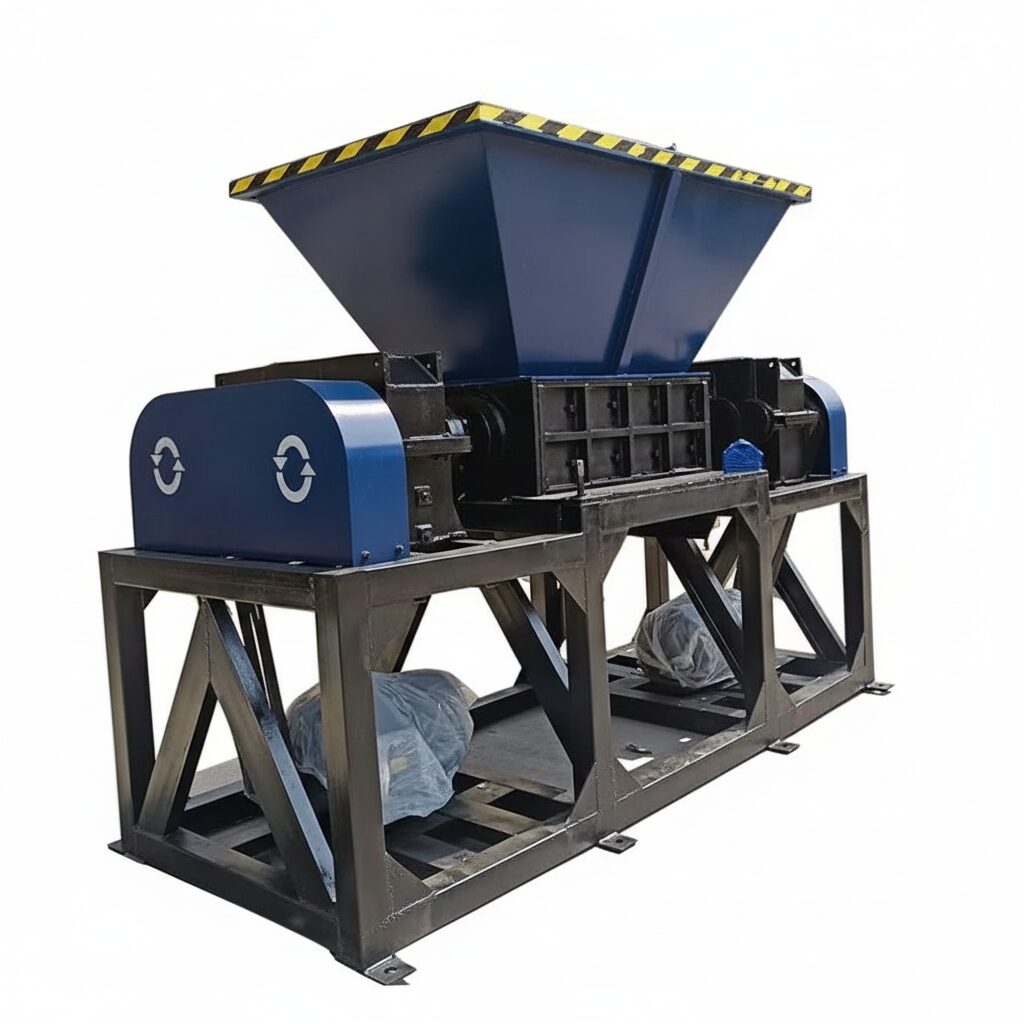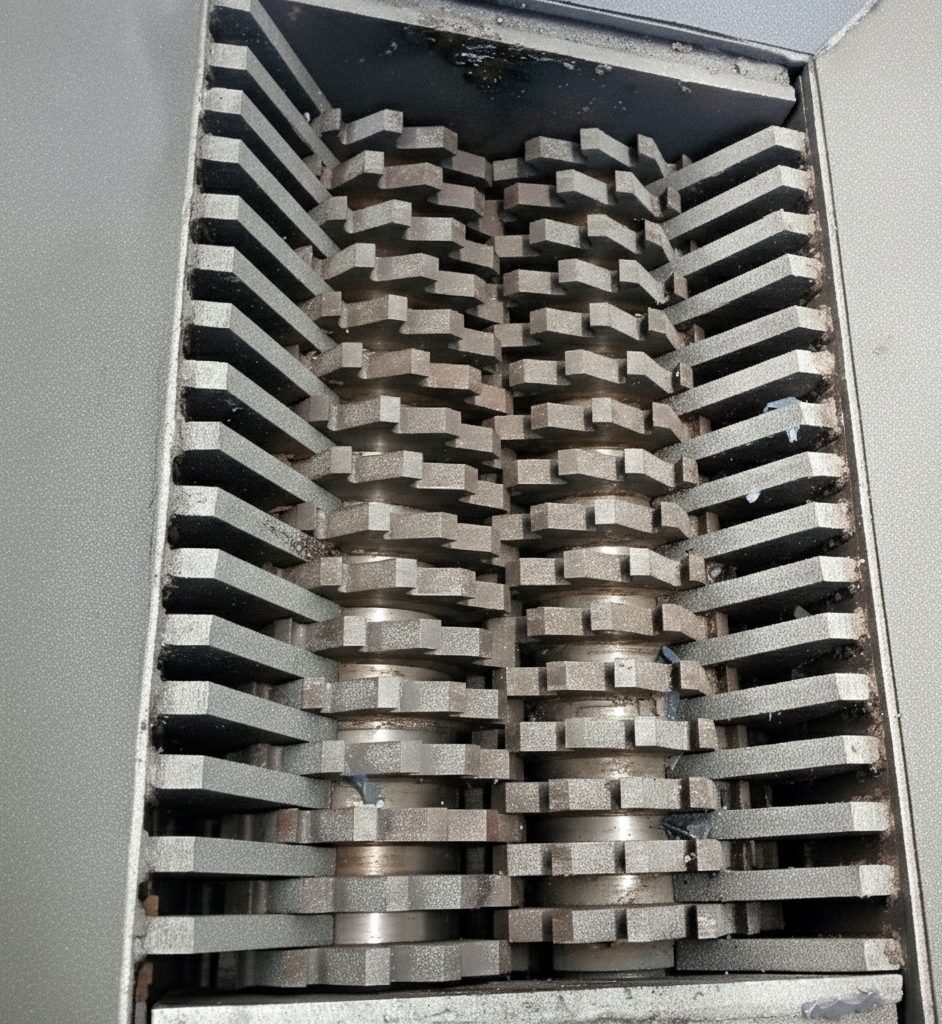Tyre Recycling Solutions: What Works, Why It Matters & How Shredall Can Help
Tyre waste is a serious environmental issue. In India alone, about 2 million metric tonnes of tyres are discarded each year, plus nearly 0.8 million tonnes of used or scrap tyres are imported. That means close to 2.8 million tonnes of tyre waste must be handled properly. As cities grow, improper dumping leads to blocked drains, mosquito breeding, and even tyre fires. That’s why effective tyre recycling solutions are not just helpful—they’re urgently needed.
Key Types of Tyre Recycling Solutions
Here are the main ways tyres are recycled today, along with their strengths & challenges:
| Solution | What It Does | Pros | Cons / Challenges |
| Mechanical Shredding + Granulation | Tyres are shredded into chips, steel wires and textile fibres removed, then ground into crumb rubber or smaller rubber bits. | Simple technology, produces useful rubber materials (playgrounds, mats, road surfaces), recovery of steel. Less energy than thermal processes. | Wear on blades and machines; handling of embedded steel; need for proper separation; quality of crumb rubber may vary with input. |
| Pyrolysis / Thermal Decomposition | Tyres are heated without oxygen to break them down to pyrolysis oil, carbon black, gas, steel. | Converts tyre waste into fuel, recovered carbon black (rCB), steel—multiple revenue streams. Helps reduce dependence on fossil raw materials. | High capital cost; emissions control required; requires proper feedstock preparation; regulatory oversight. |
| Devulcanization | Reverse process of vulcanizing rubber (i.e. breaking sulphur bonds), allowing rubber to be reused or re-blended with virgin rubber. | Produces higher quality rubber that can go into more demanding applications; reduces need for new raw rubber. | Technology is more complex; not all tyre types/devices/devulcanization methods are equally effective. |
| Product / Upcycling / Use-infrastructure | Using recycled rubber in asphalt, mats, playground flooring, garden furniture, etc. | Creates local demand; lower processing requirement; visible environmental impact. | Demand and quadlity requirements vary; upcycled products often lower profit margins; logistic costs. |
Market Trends & What’s Changing
- India tyre recycling market is estimated at USD 590.9 million in 2024, expected to reach USD 743.8 million by 2030 at CAGR ~4.1%.
- Major new facilities are being approved that emphasize continuous pyrolysis with strict environmental controls. Gujarat, for example, has recently given green light to continuous pyrolysis plants under tighter emissions and pollution norms.
- Carbon black from waste tyres (or “recovered carbon black”) is becoming more valuable. Industries are seeking rCB to reduce their carbon footprint.
- Regulatory push like Extended Producer Responsibility (EPR) is increasing — producers must ensure end-of-life tyres are collected and processed responsibly. That adds pressure for better recycling infrastructure.
👉 Contact Us Email: Info@shredall.in, Phone: +91 9090003535. Explore our Shredder range and get expert assistance.
Where Shredder Machines Come In

A big part of tyre recycling is size reduction and material separation. That’s where shredder machines are essential; they are often the first technical step in most recycling solutions.
ShredallTM shredder machines fit into tyre recycling solutions by:
- Shredding tyres into manageable chips or strips so that steel belts, textile reinforcements, fibre etc. become exposed and easier to separate.
- Reducing volume and weight of waste tyres for transport or feeding into further processes (granulation, pyrolysis, etc.).
- Robust blade design to resist wear from rubber + steel; lower downtime means better productivity.
- We manufacture customizable output size, so chips from ShredallTM machines can suit different downstream use: crumb rubber, fuel feedstock, or rubber mats etc.

How to Choose Good Tyre Recycling Solutions (with ShredallTM)
If you’re planning or evaluating tyre recycling, here are key factors to consider — and how Shredall’s machines help with them:
- Feedstock collection & sorting — Clean, sorted tyres reduce damage to shredders and improve output quality.
- Blade & shaft durability — Machines must handle embedded steel and tough rubber. Shredall offers hardened steel blades and dual-shaft designs.
- Safety & environmental controls — Dust, noise, possible emissions need managing. Machines should be designed with guards, proper venting, etc.
- Separation capability — After shredding, magnetic separation, fibre removal, screening help improve purity of rubber.
- Integration potential — A good shredder works well as part of a larger recycling chain (granulator, pyrolysis, devulcanizer). Shredall machines are built for such integration.
Why Tyre Recycling Solutions Are More Important Than Ever
- Massive waste: In India alone, approx. 2 million MT of tyres turn into scrap every year.
- Increasing environmental regulations make proper recycling mandatory rather than optional.
- Demand for recycled material (rubber, carbon black, steel) is rising as industries try to reduce reliance on virgin raw materials.
- Innovations (continuous pyrolysis, devulcanization, robotics, AI in sorting) are making recycling more efficient, less polluting, more profitable.
Conclusion
“Tyre recycling solutions” is a broad term — it includes shredding, thermal processing, devulcanization, upcycling, and more. Shredder machines are a foundational component of many solutions. For anyone wanting to invest or scale in tyre recycling, choosing strong, reliable shredders is crucial. Shredder from ShredallTM can play that role: durable, efficient, capable of handling tough input, and helping make tyre recycling solutions both practical and profitable.

